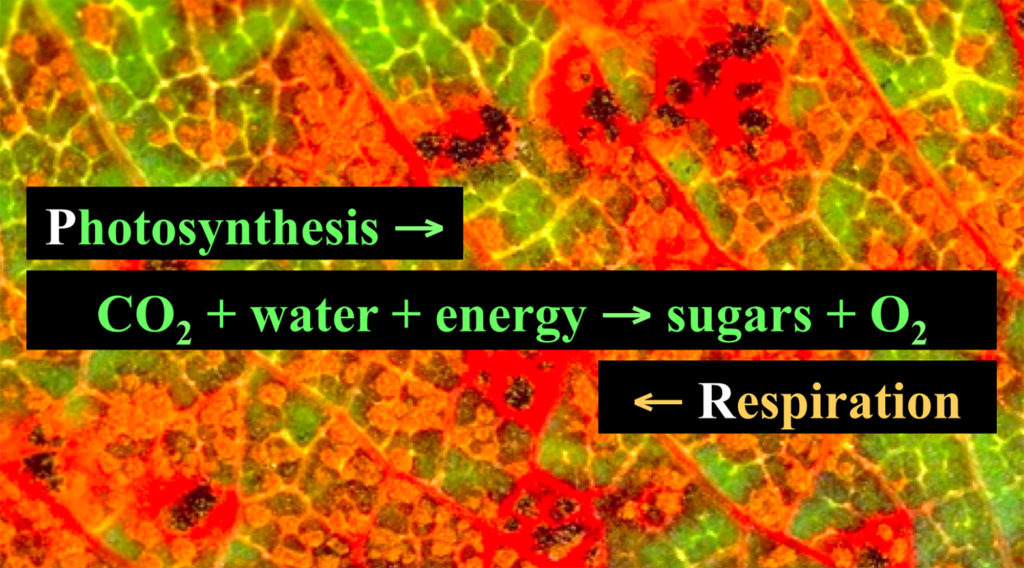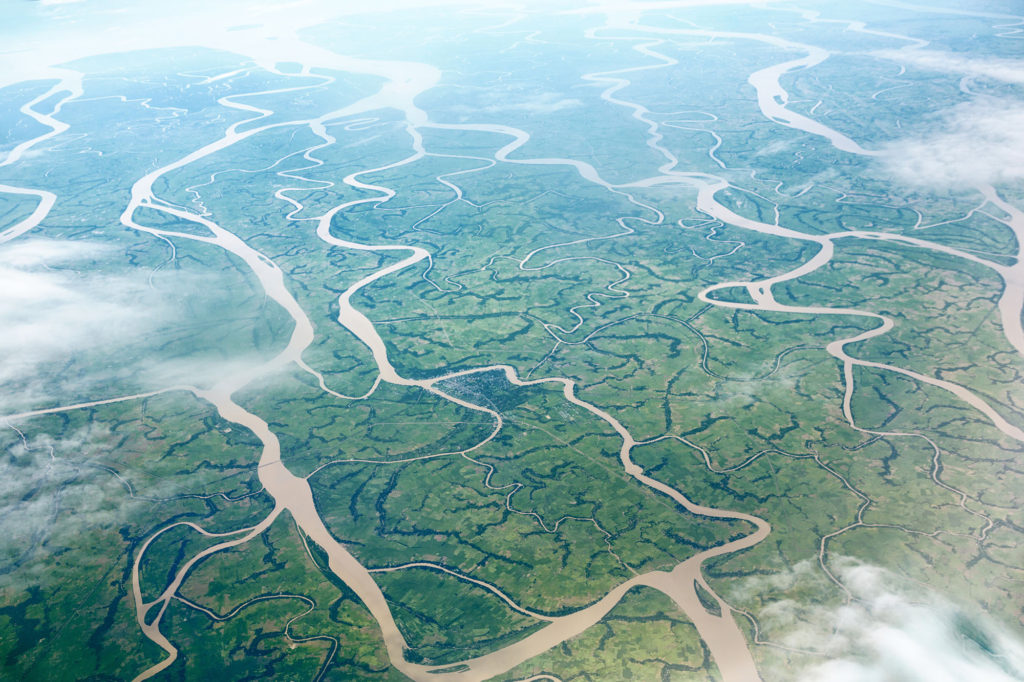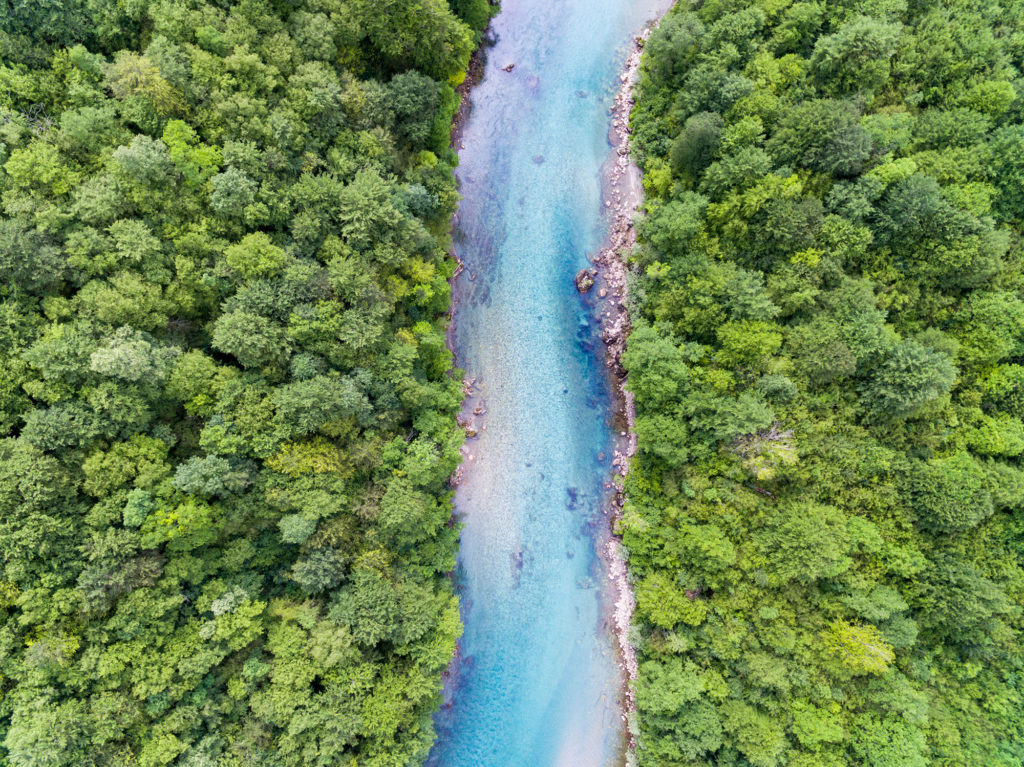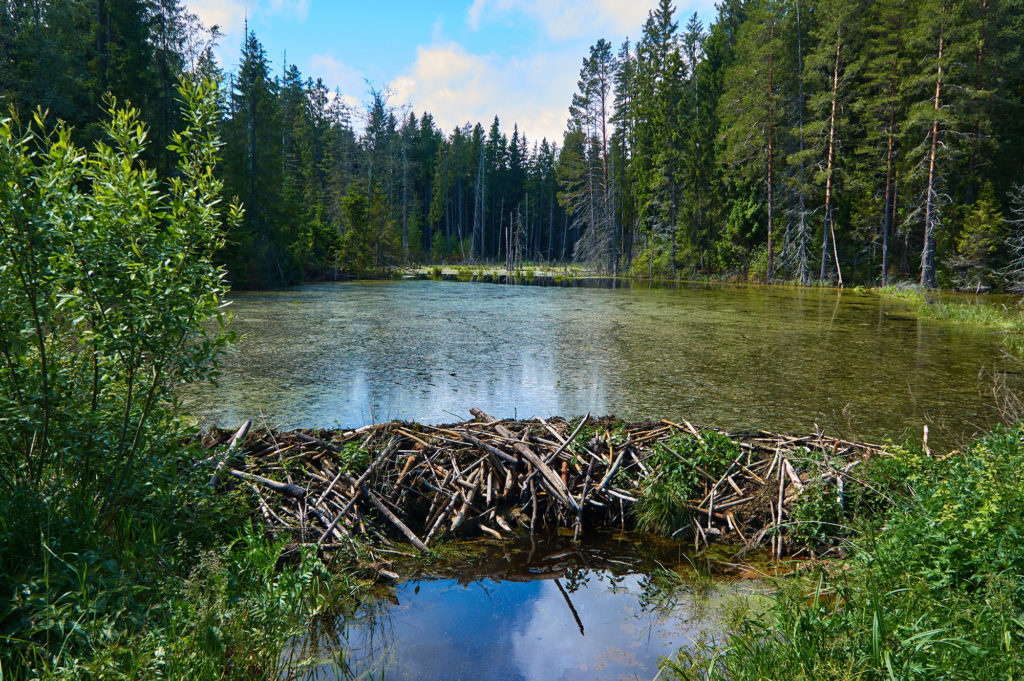
Streams Flowing Water & Terrestrial Impacts


Streams Objectives:
- Describe how stream orders are calculated as streams increase in size.
- Link stream order to levels of photosynthesis.
- Explain how streams can change over time, including the characteristics and impact of beavers.
We are heading into freshwater ecosystems, starting with streams. As always, this begins with considering safety. If you spend a lot of time in streams fishing or kayaking, this may mean investing in specialized gear.

Streams have flowing water moving from one point to another, typically downhill towards larger streams, and eventually the ocean.
Streams are classified based on their size using a numbering system. The smallest are stream order #1, barely a trickle of water.
If you look at the figure below, you may notice some unusual addition. It starts fine: when a stream order 1 combines with another stream order 1, it creates stream order 2. 1 + 1 = 2, yes that looks correct.
But, a stream order 2 does not change when a stream order 1 is added to it. If a stream order 2 combines with another stream order 2, it creates stream order 3. So 2 + 2 = 3. The reason is that it takes big increases in water (magnitude increases) to result in a significantly different stream. Two similar-sized streams have to come together to create the next order.
To see whether this makes sense, what has to be added to stream order 3 to make it stream order 4?

Adding a stream order 3 to another stream order 3 would result in stream order 4. 3 + 3 = 4
Here is an example of a third-order stream. It has shallow areas and some areas are shaded by trees.
Stream Order and Photosynthesis
As a refresher, photosynthesis is the combination of carbon dioxide and water in the presence of sunlight energy, producing oxygen and energy-rich sugars. Only producers carry out this process.
Respiration is the opposite reaction: using sugars and oxygen and producing carbon dioxide, water, and energy. All organisms carry out some form of this process.


Stream order has an impact on how much photosynthesis occurs within the stream.
Smaller streams are heavily impacted by the riparian zone, the terrestrial area bordering a stream.

In this video, note the wide variety of plants surrounding the stream and think about how they may impact organisms within the stream.
The smallest streams (orders 1, 2, 3) have plenty of nutrients from the riparian zone (dirt, leaves, branches), but lower sunlight since plants are shading the water. Photosynthesis within the stream is low. There are organisms in the water that eat detritus like branches and leaves, so respiration is high.
In middle-order streams (orders 4, 5, 6), light reaches the bottom and photosynthesis is high.

In large streams (orders 7, 8, 9 +), the water is deep and clouded with sediment washing in from upstream. Photosynthesis is low, although there are still many organisms respiring, living off food coming from the productive upstream orders.

We are making stops along Alsea River, known for Alsea Falls and camping, located about a half hour drive from Corvallis. Just like a terrestrial site, we can use the “Seven Steps” to survey the location.
You can add your own “Seven Step” surveys of field sites to the final field guide, it would work well under Skills/Description.
This is a small stream but it is still complex with high biodiversity.
In our research with specific questions to answer, we would collect animals and algae for measurements using equipment like nets and collection vials. On this trip we are primarily using our cameras to get a feel of overall biodiversity. This is lower impact on the organisms and a broader view of the habitat.
We decided to purchase a GoPro camera for views we can’t get with the smart phone. It is a big investment, but splitting the cost and using it to “drive” outdoor adventures may make it a good purchase.
We can’t discuss rivers without introducing the magnificent beavers!
Beavers are rodents with distinct structures.

Orange Teeth

Waterproof

Extra Fat
Beaver use their webbed rear feet and flat tails to push through water.
Beaver enclosure at the Oregon Zoo, Portland.
Beavers have elaborate social behaviors.

Extended Families

Communication

Territoriality
Beavers are a keystone species. Although they have a low total biomass compared to many other species, their tree removal and dam building have a substantial impact on the environment.

Nutrient Retention

Diverse Habitats
Humans have a complex relationship with beavers.

Cultural Significance

Habitat Alteration

Busy as a Beaver

Streams can be impacted by seasons. In tundra environments, streams can completely freeze. In deserts, streams can completely dry out.
Streams can change over time, new channels can form or fill in with soil. Species come and go as stream conditions change.


Beavers can initiate succession by building dams in streams that block water flow and can cause ponds to form. What are two ecosystem advantages of beaver dams?
In the next section we will examine freshwater bodies that are relatively still: lakes and ponds.

Check your knowledge. Can you:
- Describe how stream orders are calculated as streams increase in size?
- Link stream order to levels of photosynthesis?
- Explain how streams can change over time, including the characteristics and impact of beavers?



